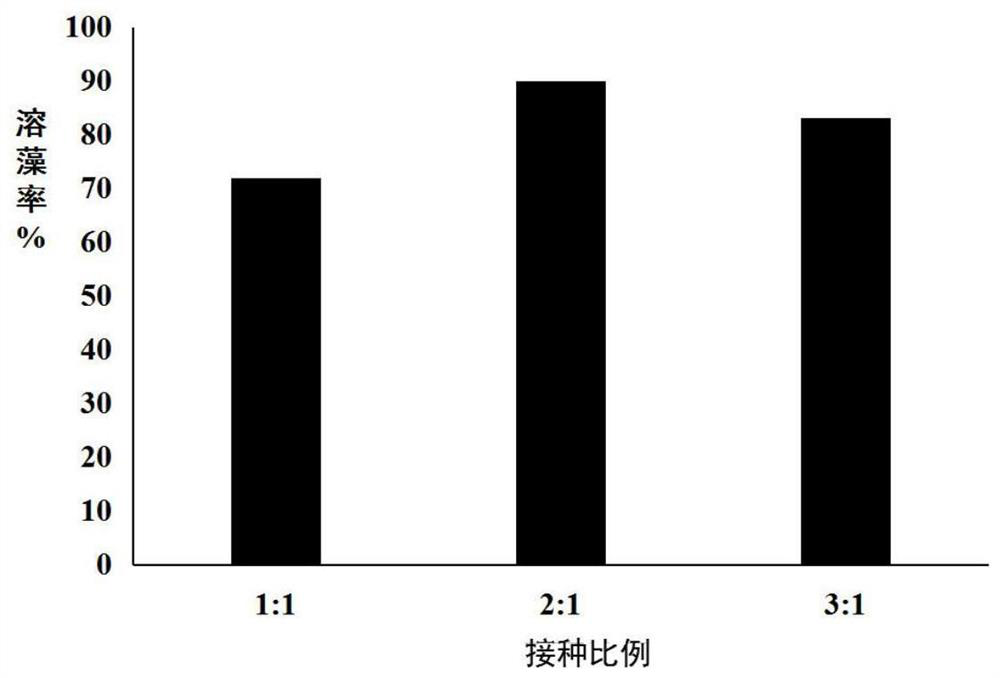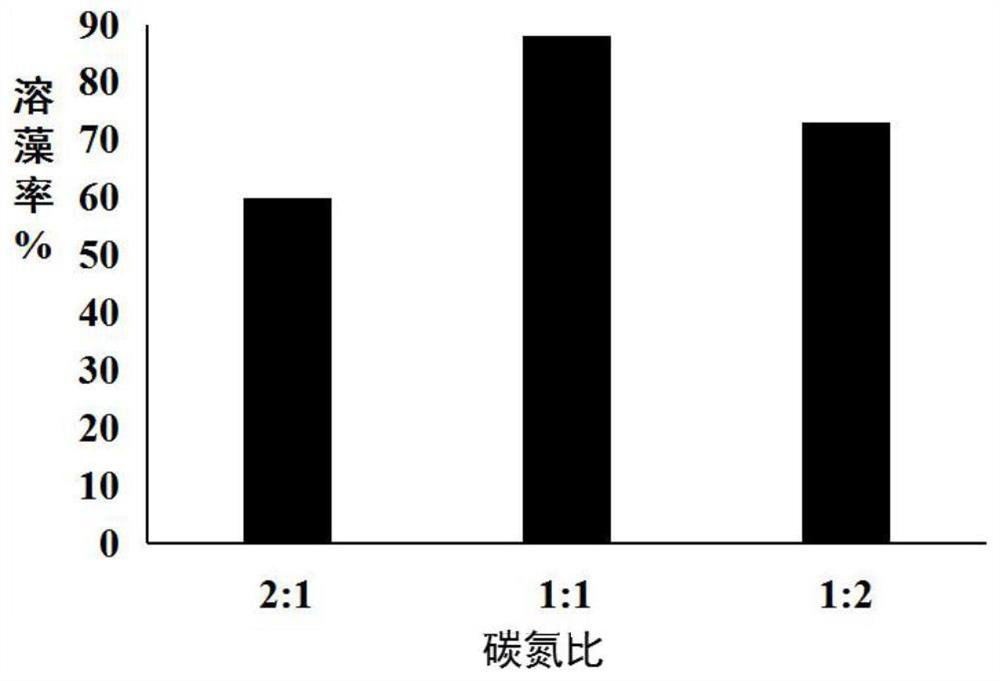Composite microbial algae removal microbial agent and preparation method and application thereof
A technology of compound microorganisms and microbial strains, applied in the field of microbial engineering, can solve the problems of complex components of biological preparations, tedious preparation process, long time for algae removal, etc., and achieve the effect of increasing reuse channels, easy promotion and application, and less material use
- Summary
- Abstract
- Description
- Claims
- Application Information
AI Technical Summary
Problems solved by technology
Method used
Image
Examples
Embodiment 1
[0030] A preparation method of a compound microbial algicide, comprising the following specific steps: respectively activating Z-1 algae-dissolving bacteria and XN-1 flocculating bacteria, which can be activated by scribing on LB plates; Bacteria and XN-1 flocculation bacteria were expanded to obtain seed liquid. Specifically, the activated Z-1 alginolytic bacteria and XN-1 flocculation bacteria were respectively inoculated into a 1L Erlenmeyer flask containing 500mL broth medium. Cultivate on a shaking table at 30-35°C, 100-300rpm / min for 12-24h, preferably at 30°C, 180rpm / min for 24h; take Z-1 algophilic bacteria and XN-1 The seed liquid of the flocculating bacteria is co-fermented and cultivated to obtain the bacterial agent.
Embodiment 2
[0032] The seed liquid of Z-1 alginolytic bacteria and XN-1 flocculating bacteria in the above example 1 were fermented and cultivated together according to the ratio of 1:1, 2:1, and 3:1 to obtain three bacterial agents, and the growth of the bacteria was tested. and algae-dissolving performance, in different inoculation ratios, the growth of the two strains can be seen figure 1 , there is no significant difference in the growth of the two strains, and they can be co-cultivated under the same conditions; at the same time, the fermentation broth obtained from different inoculation ratios is used to treat Microcystis aeruginosa, and the algicidal effect is tested. The results are shown in figure 2 , where the test uses Microcystis aeruginosa liquid, and the concentration of algae is 1×10 6 When cell / ml, the different inoculation ratios of each group are based on the same volume ratio of the bacterial agent and algae liquid, at a temperature of 20-35°C, the light intensity is 1...
Embodiment 3
[0038] High-density fermentation has higher requirements on the type and content of nutrient sources in the substrate, and the ratio of carbon sources to nitrogen sources will affect the growth of strains, thereby affecting the algae-dissolving effect;
[0039] Test the ratio of carbon source glucose and nitrogen source ammonium chloride in the fermentation medium, select three groups of ratios of 2:1, 1:1, and 1:2, under the conditions of aeration rate 1L / min, rotation speed 100rpm, temperature 30°C, After 3 days of fermentation, the algae-dissolving rate of the bacterial agent was tested, and the results are shown in image 3 , the carbon-nitrogen ratio is 1:1, the algae-dissolving effect is the best, and the preferred concentration is 0.5‰;
[0040] In a preferred embodiment, the fermentation medium can be prepared by the following method: introduce the tail water of the urban sewage plant into the fermentation culture device, add ammonium chloride at a mass ratio of 0.2‰, ...
PUM
 Login to View More
Login to View More Abstract
Description
Claims
Application Information
 Login to View More
Login to View More - R&D
- Intellectual Property
- Life Sciences
- Materials
- Tech Scout
- Unparalleled Data Quality
- Higher Quality Content
- 60% Fewer Hallucinations
Browse by: Latest US Patents, China's latest patents, Technical Efficacy Thesaurus, Application Domain, Technology Topic, Popular Technical Reports.
© 2025 PatSnap. All rights reserved.Legal|Privacy policy|Modern Slavery Act Transparency Statement|Sitemap|About US| Contact US: help@patsnap.com



